Screen layouts for Cisco devices
 Feedback?
Feedback?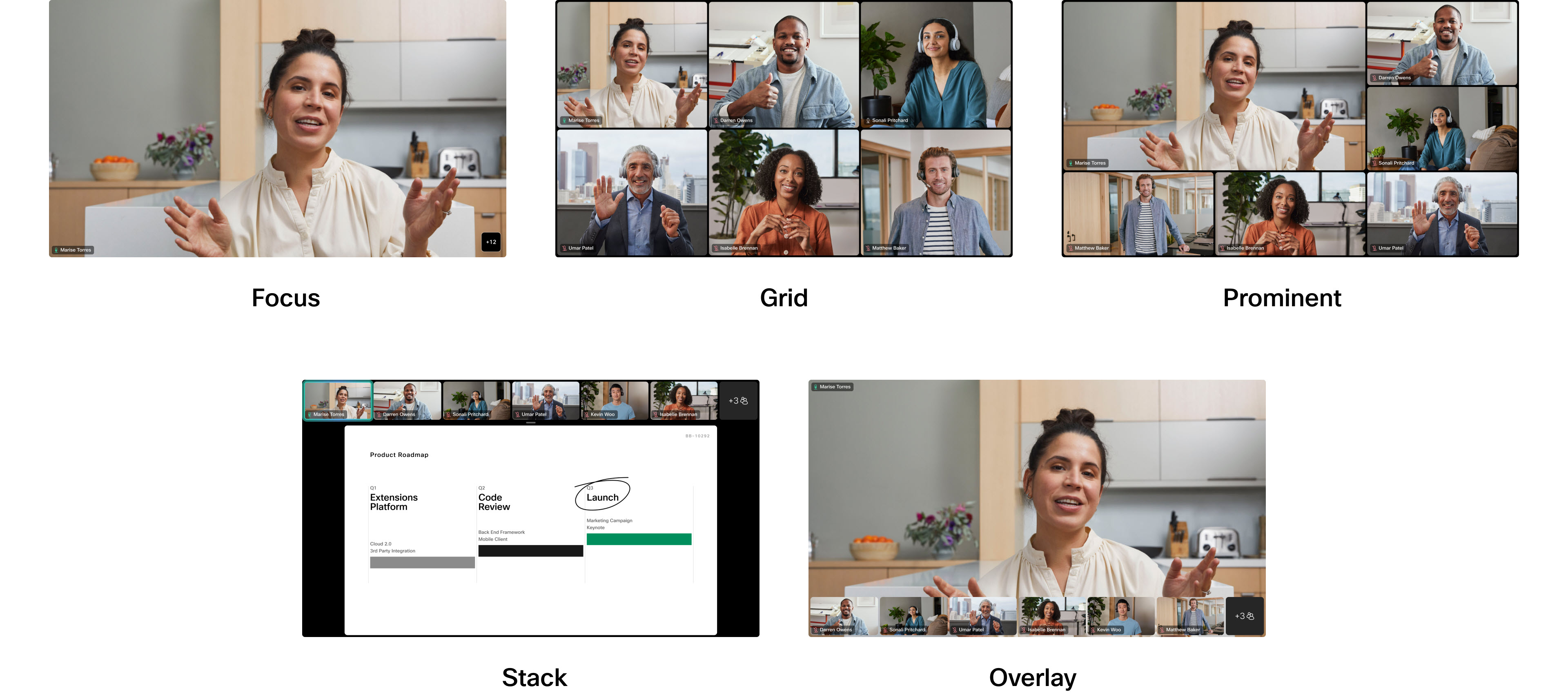
You can choose how video streams appear during a meeting by selecting one of the layout options. How the layout appears depends on your device and the number of screens in your setup. Layouts also change when someone shares content in a meeting.
This article describes how the layouts appear according to the number of screens in your setup, and whether there is content being shared or not.
When you call into a Webex meeting from a Cisco device, you'll see a Layout button on your touch controller or integrated touch screen. Tapping it opens a menu and you can select different layouts.
Read moreThis article contains descriptions about how each layout looks by default, and when each one is available to you. There are two features you can enable and disable from the Layouts menu, which can enhance your chosen layout's appearance and optimize screen space. See these articles for more information: People focus on Board, Desk, and Room Series and Hide non-video participants in meetings.
Below, you can find out how each layout will appear on single screen setups: with participants only, and with shared content. This applies to Board, Desk, and Room Series devices.
The same layouts are also available during Cisco Webex Video Integration for Microsoft Teams calls, on a single screen.
Single screen layouts - participants only
Grid
This layout shows a grid of up to 5x5 participants. Grid is the default layout for single screens. Here's an example of Grid for a Room Kit:
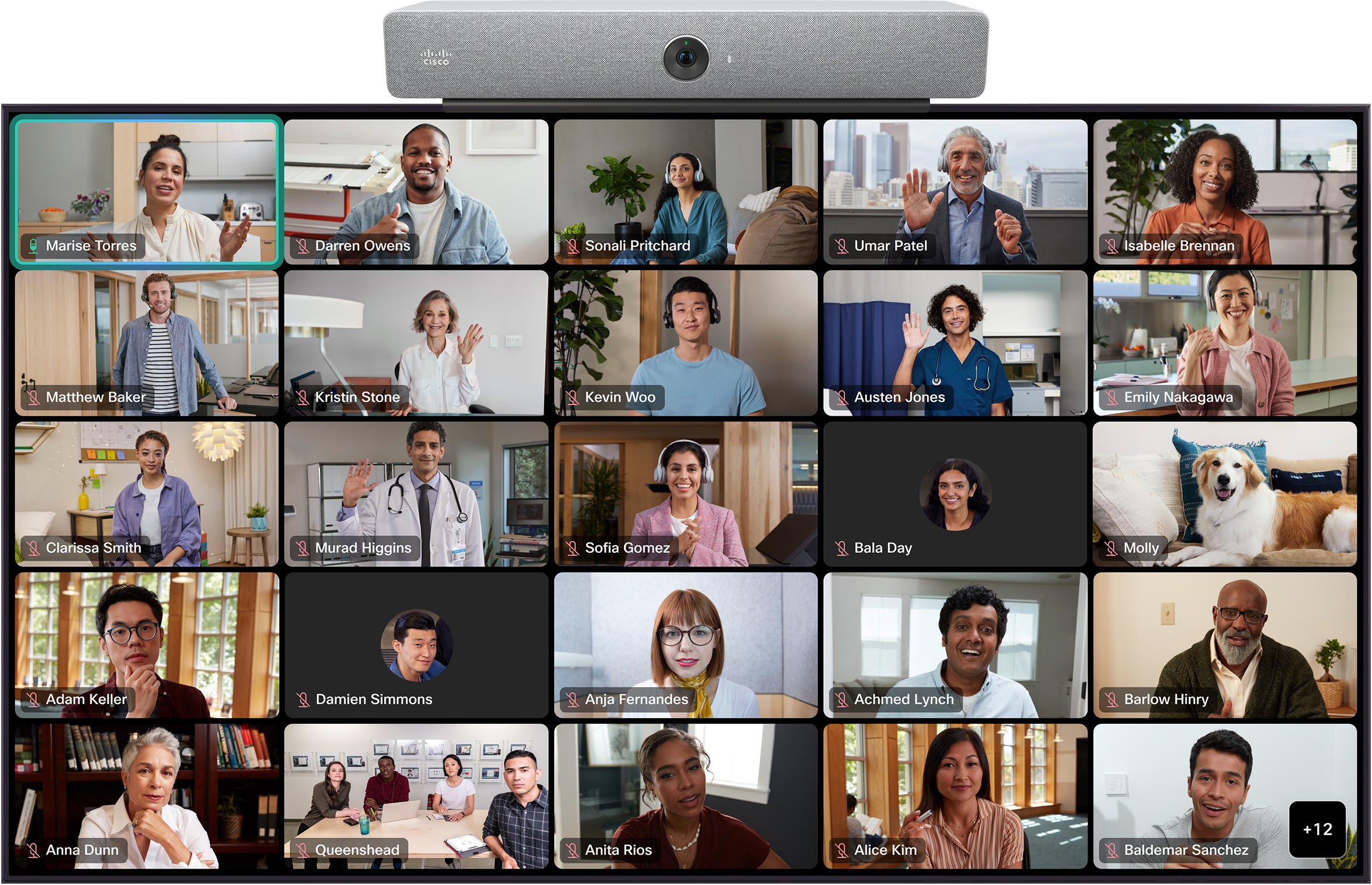
The sort order of the participant thumbnails is based on speaker history. The most recent active speakers are visible.
If you're using Grid layout and you toggle on closed captions, your layout will automatically show a maximum of 9 participants in a 3x3 grid.
Focus
Focus shows a full-screen video of the active speaker, and is used in meetings between two people. Here's an example of Focus for a Board Pro:
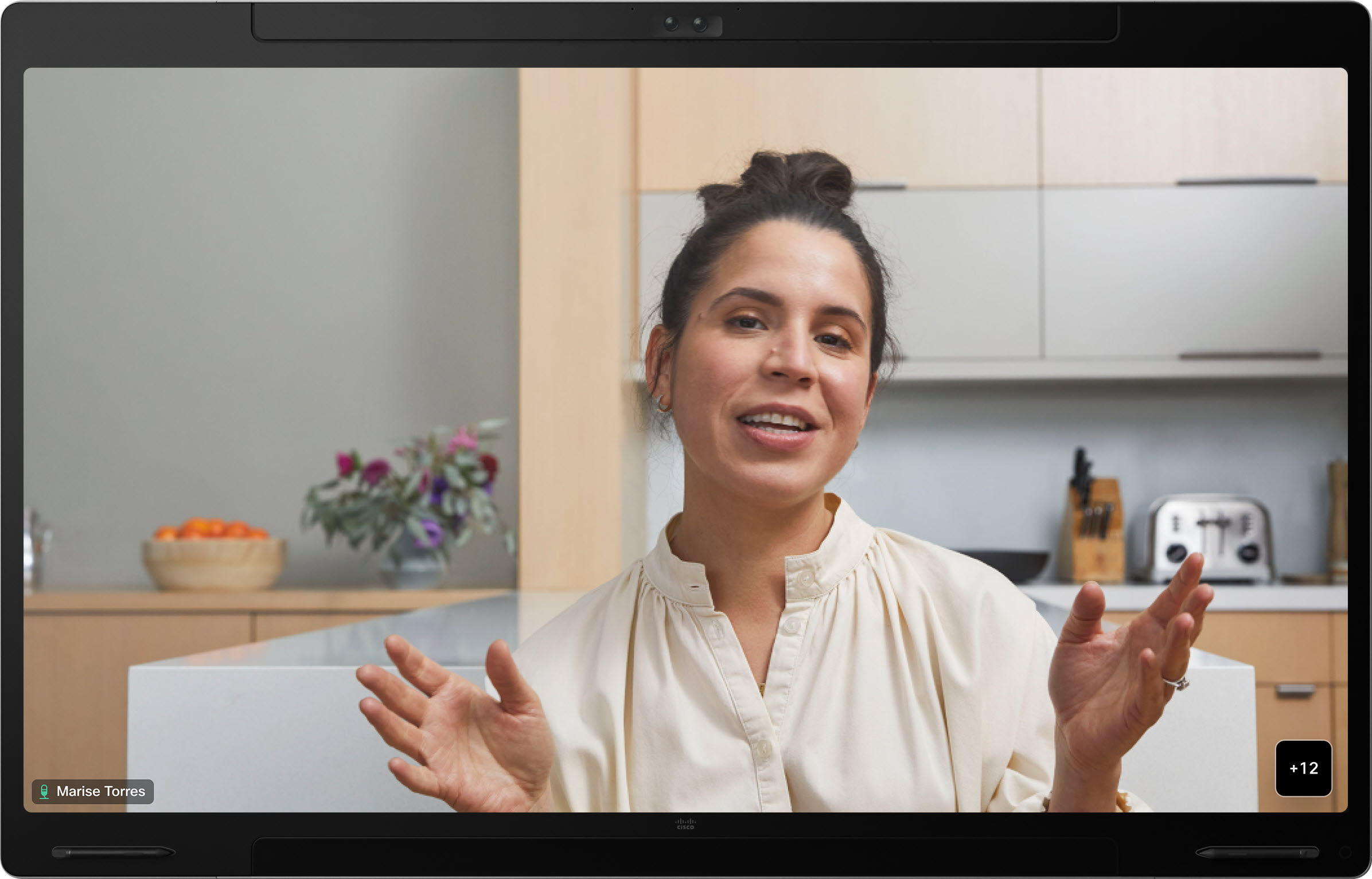
Stack
In this layout, up to 6 thumbnails of the participants appear above the active speaker. Here's an example of Stack for a Board Pro:
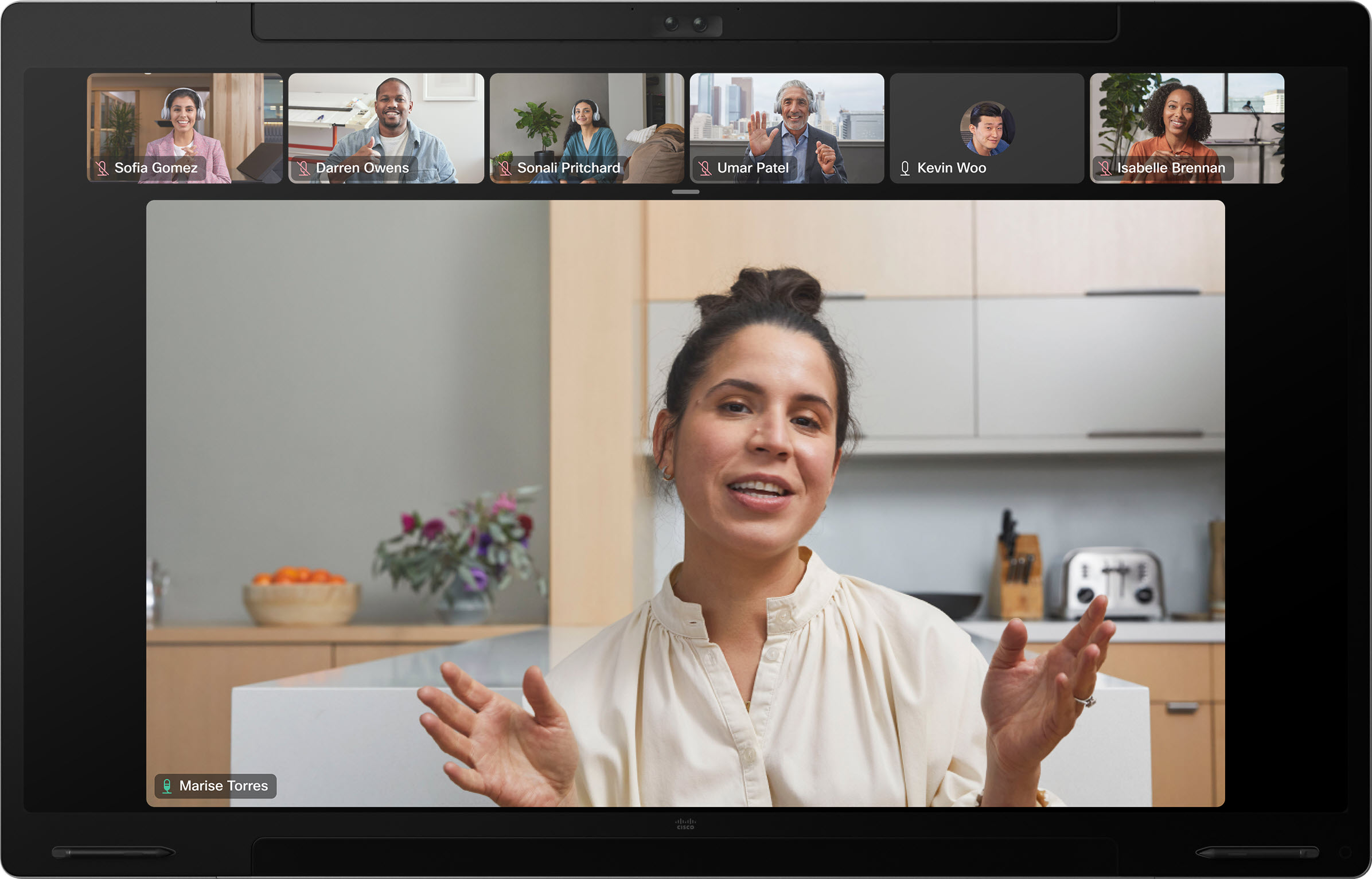
The active speaker changes dynamically.
Prominent
Prominent shows the active speaker in the upper left part of the screen, with other participants ranged across the bottom and beside on the right.
Here's an example of Prominent for a Room Kit:
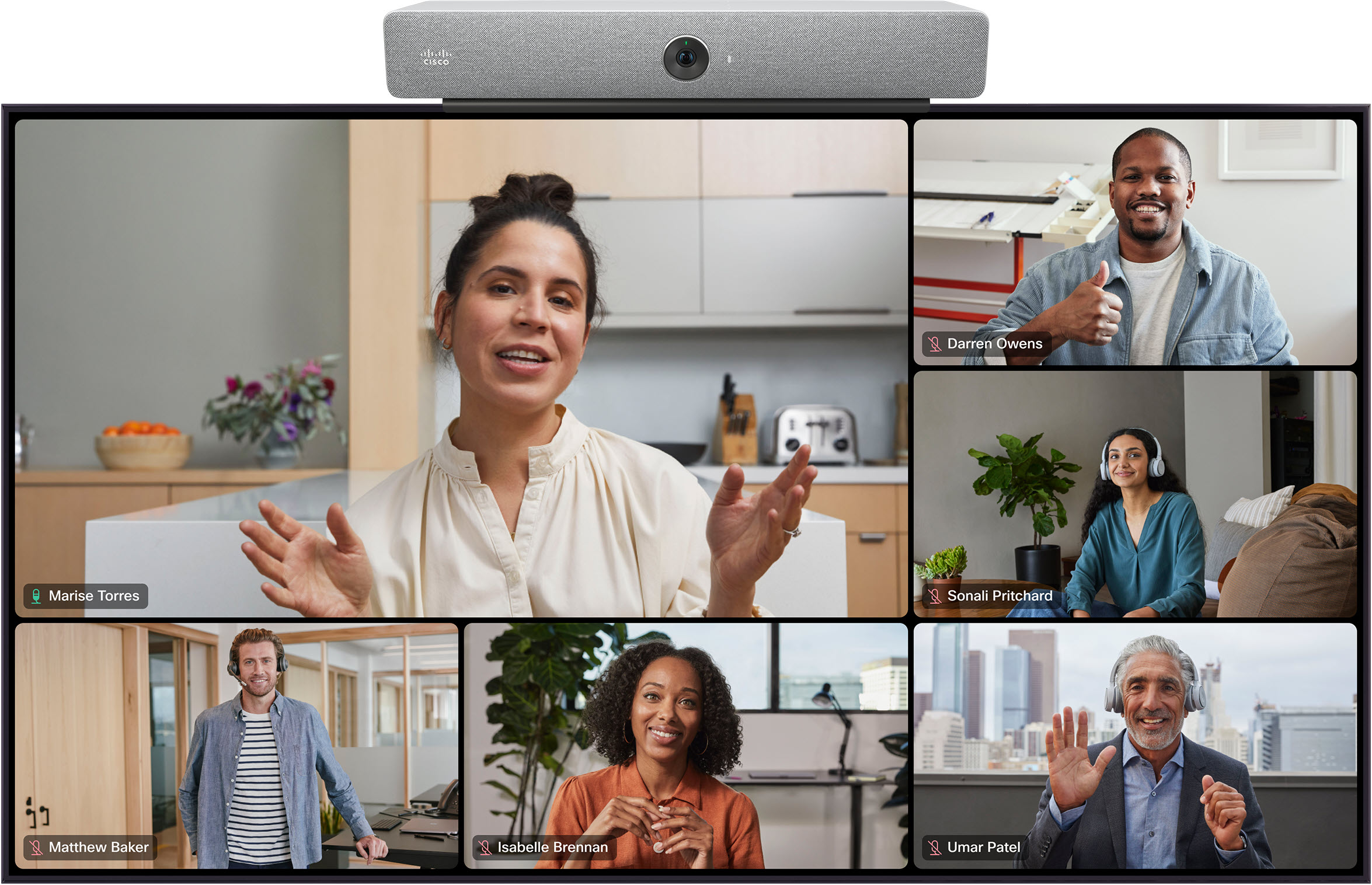
Single screen layouts - shared content
Stack
In Stack layout, content appears on the main screen with up to 6 participants in thumbnails across the top. Stack is the default layout for single screen devices when content is being shared. Here's an example of Stack for a Board Pro:
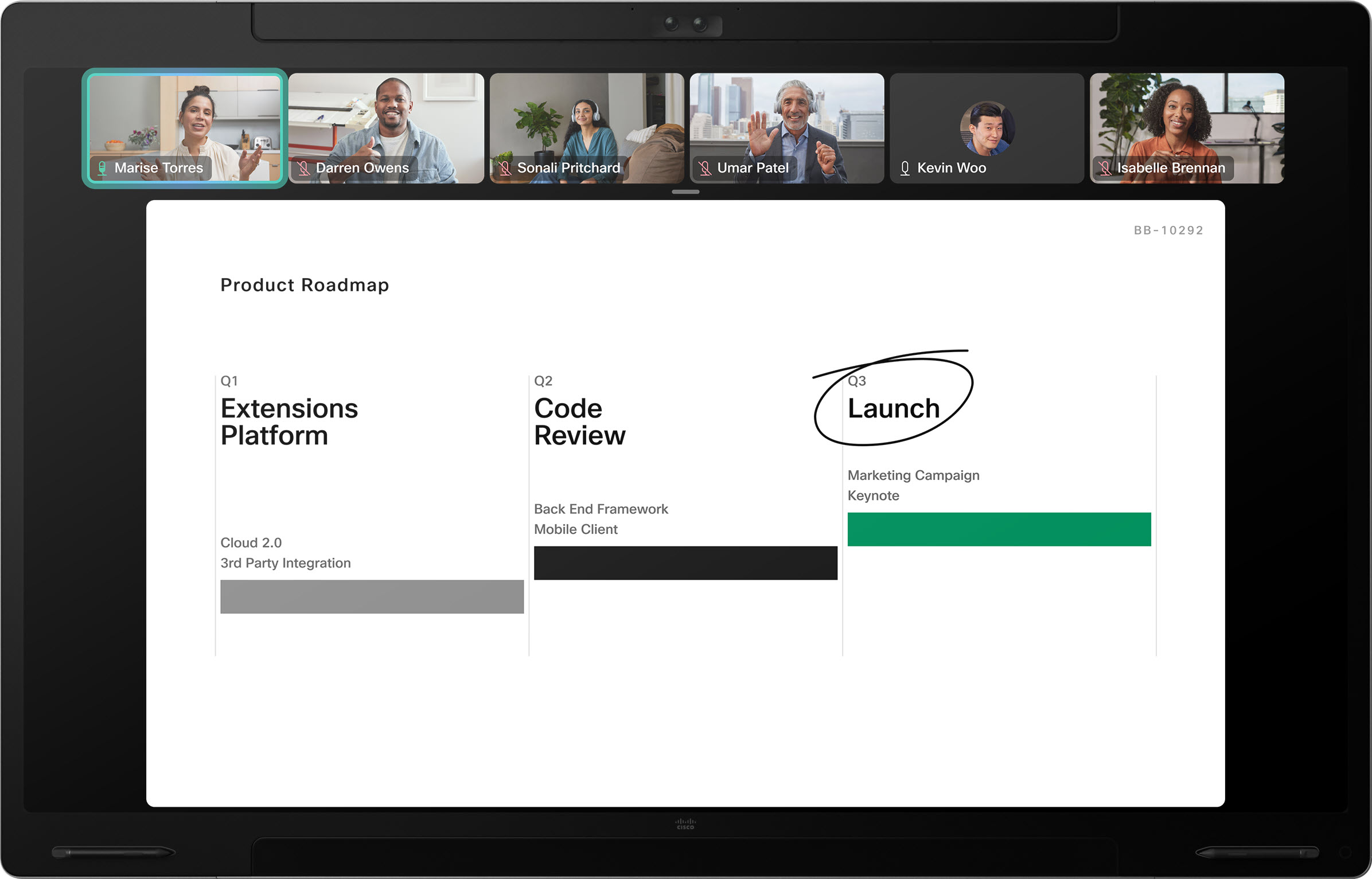
Focus
Focus shows content only and no participants will appear on the screen. Here's an example of Focus for a Room Kit:
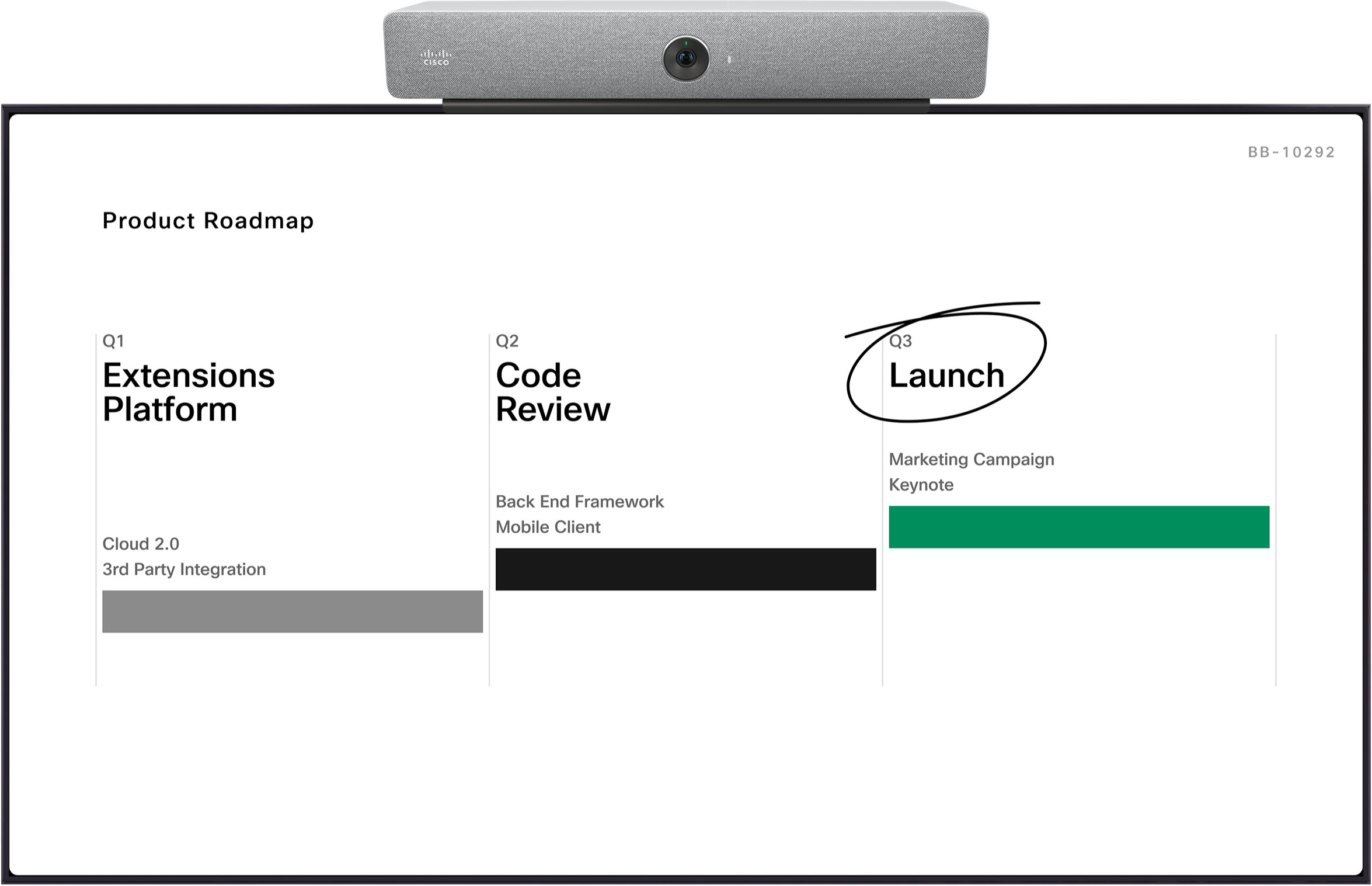
If someone starts to share content your device will automatically switch to Stack, which is the default layout for meetings with shared content. You can still switch to another layout, which will then show participants and content.
Once you've selected another content layout yourself, your device will automatically switch to that layout instead of Stack, the next time someone starts to share.
If you minimize content to a thumbnail, or content sharing stops, the participants go back to the last layout they were in.
Floating
Floating shows content and the active speaker only. Other participants don't appear on the screen. The active speaker 'floats' on top of the content and on a Desk or Board device, you can move it around to different locations on your screen.
Here's an example of Floating for a Room Kit:

Side by Side
Side by Side layout is only available for selection in meetings where someone is sharing content. It shows content on the left side of your screen, and participants on the right. Depending on your device and the size of the meeting, the participants on the right may appear in the layout you were using before content sharing started.
Here's an example of Side by Side for a Board Pro:
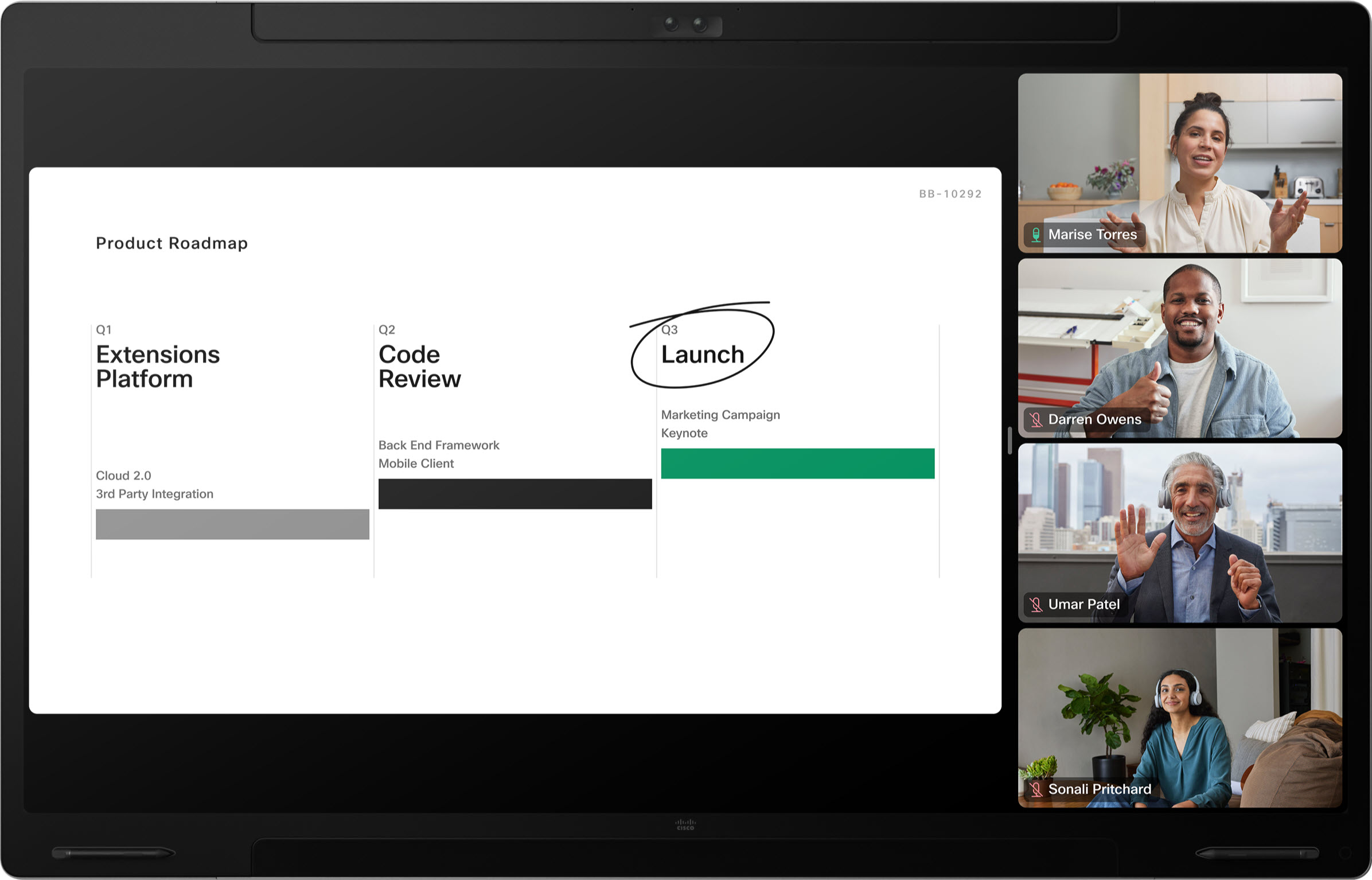
Prominent
Depending on your device and the size of the meeting you're in, Prominent might also be available.Prominent shows the shared content in the upper left part of the screen, with participants ranged across the bottom and beside on the right.
Here's an example of Prominent for a Room Kit:
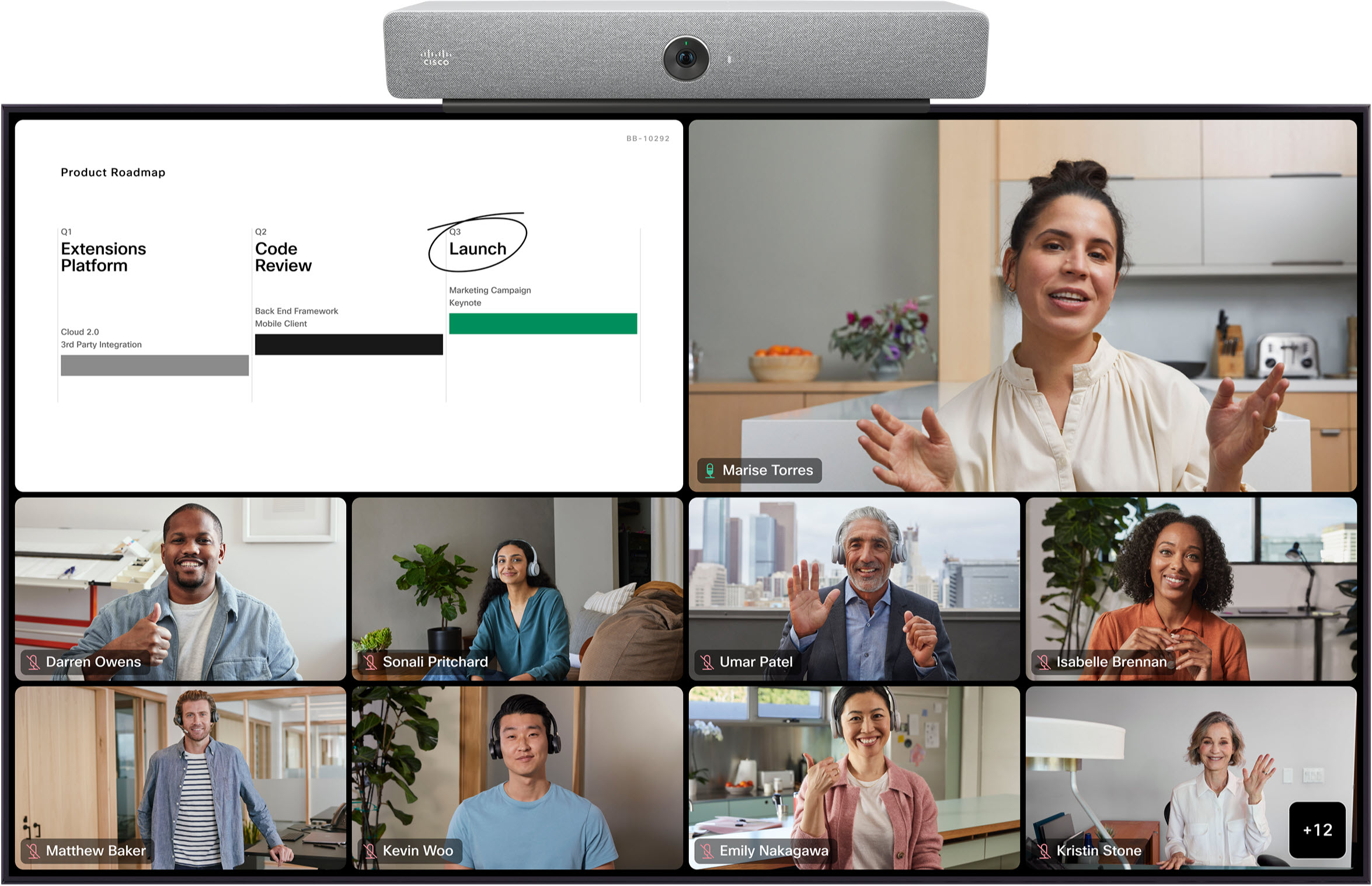
Cisco devices that support three screens always have one screen reserved for content. The participant layouts available on the other two screens are the same as described for dual screen setups. Any content that is shared is shown on the third screen; if no content is shared, the third screen will be blank.
Panoramic
The Panoramic layout is only available for Room Panorama and Room 70 Panorama devices.
In Panoramic mode two of the camera's telelenses are used simultaneously to create a wide camera view. This Panoramic layout is shown on the two main screens, and is the only layout available in meetings between two Room Panorama systems.

In any other meeting scenario, Panoramic layout is not supported and you can select a layout available for dual screen setups.
Below, you can find out how each layout will appear on Room Series devices in a dual screen setup.
See the Third-party devices tab for information about layouts on external dual screen devices.
Dual screen layouts - participants only
Grid
Grid layout on dual screen devices shows a grid of up to 12 participants on each screen. Grid is the default layout on dual screen devices.

If you're using Grid layout and you toggle on closed captions, each screen will automatically show a maximum of 9 participants, in a 3x3 grid.
Focus
In the Focus layout on a dual screen device, full-screen video of the two most active speakers is shown - one active speaker on each screen. Active speakers change dynamically.
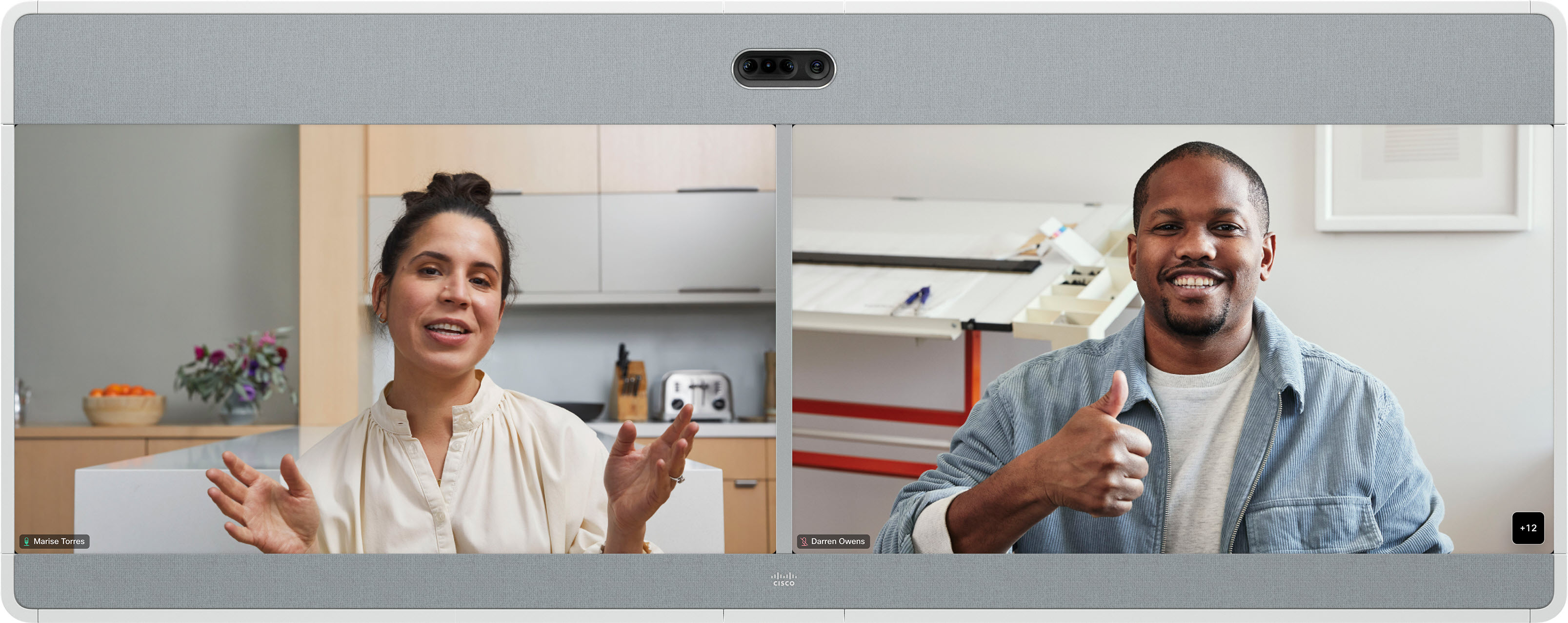
Stack
In this layout, the active speaker appears full-screen on the left. Up to 25 other participants appear in a grid on the right.
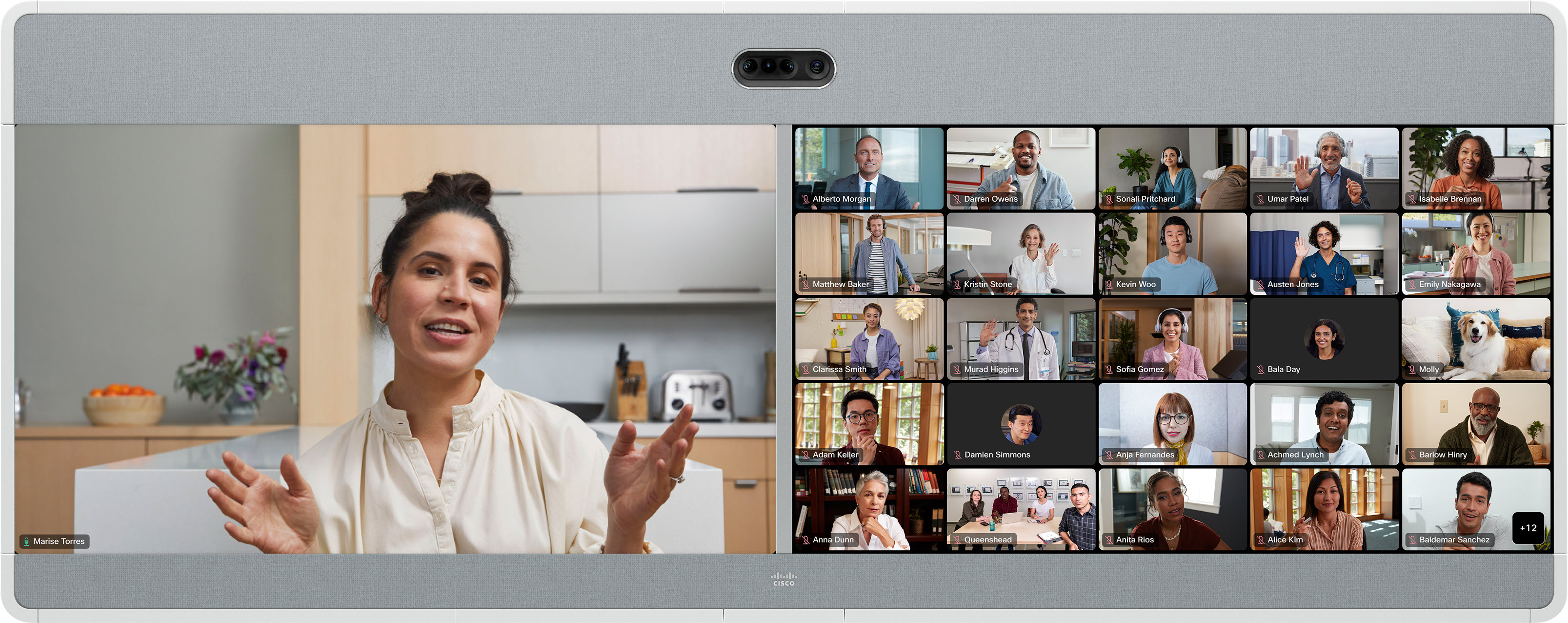
The active speaker changes dynamically.
In Prominent layout the active speaker appears on the right screen, and depending on your device, up to 25 other participants in a grid on the left screen. The active speaker changes dynamically.
Prominent

Dual screen layouts - shared content
Grid
Grid layout on dual screen devices shows a grid of up to 25 participants on the left screen and content on the right. Grid is the default layout on dual screen devices.
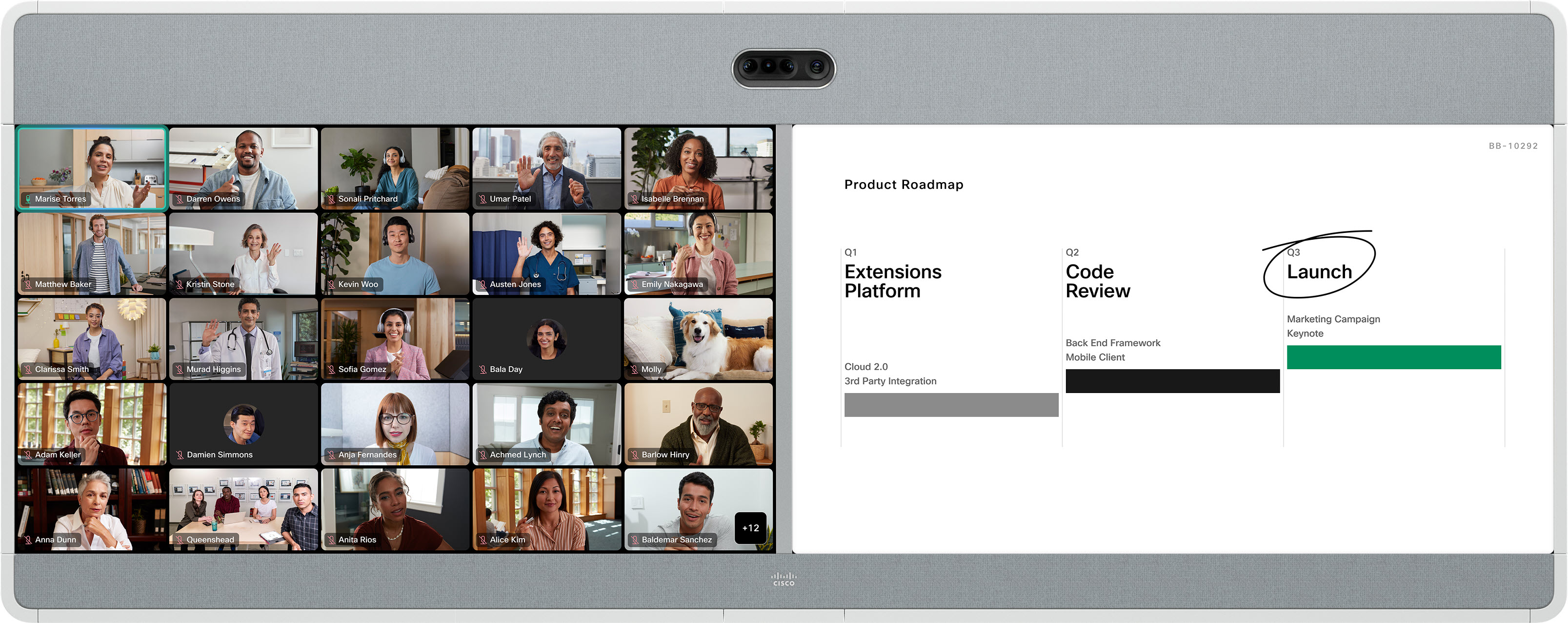
Focus
In the Focus layout on a dual screen device, full-screen video of the active speaker is shown on the left screen, and content on the right.
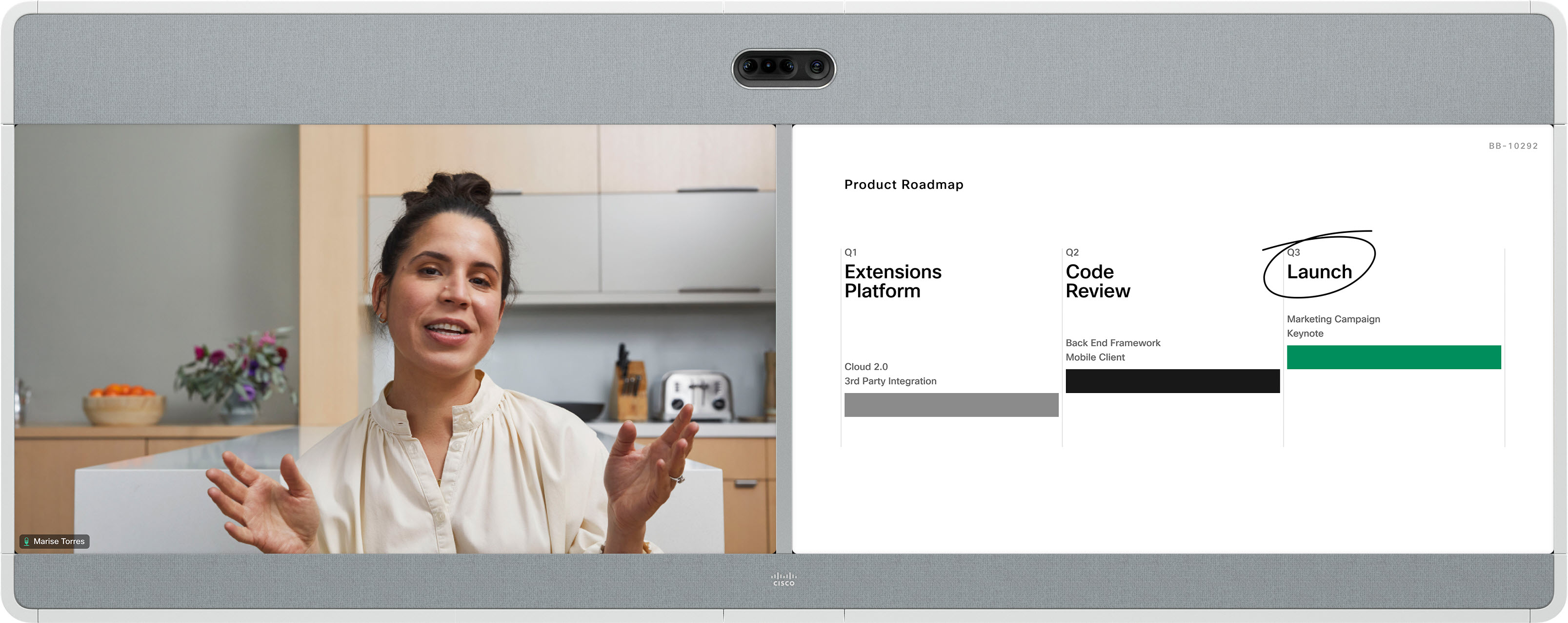
Stack
In this layout, up to 6 thumbnails of the participants appear above the active speaker on the left screen, and content appears full-screen on the right.
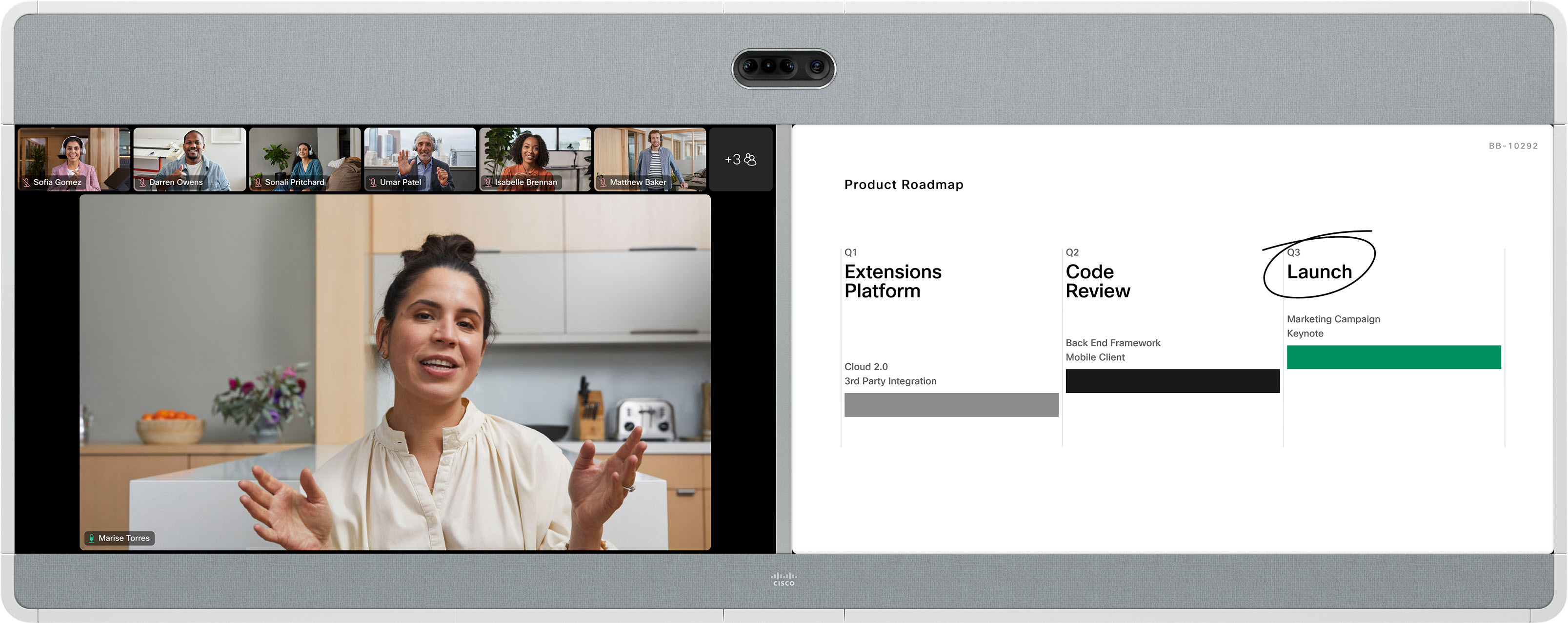
Prominent
Prominent shows the active speaker in the upper left part of the left side screen, with other participants ranged across the bottom and beside. Content appears full-screen on the right. The active speaker changes dynamically.
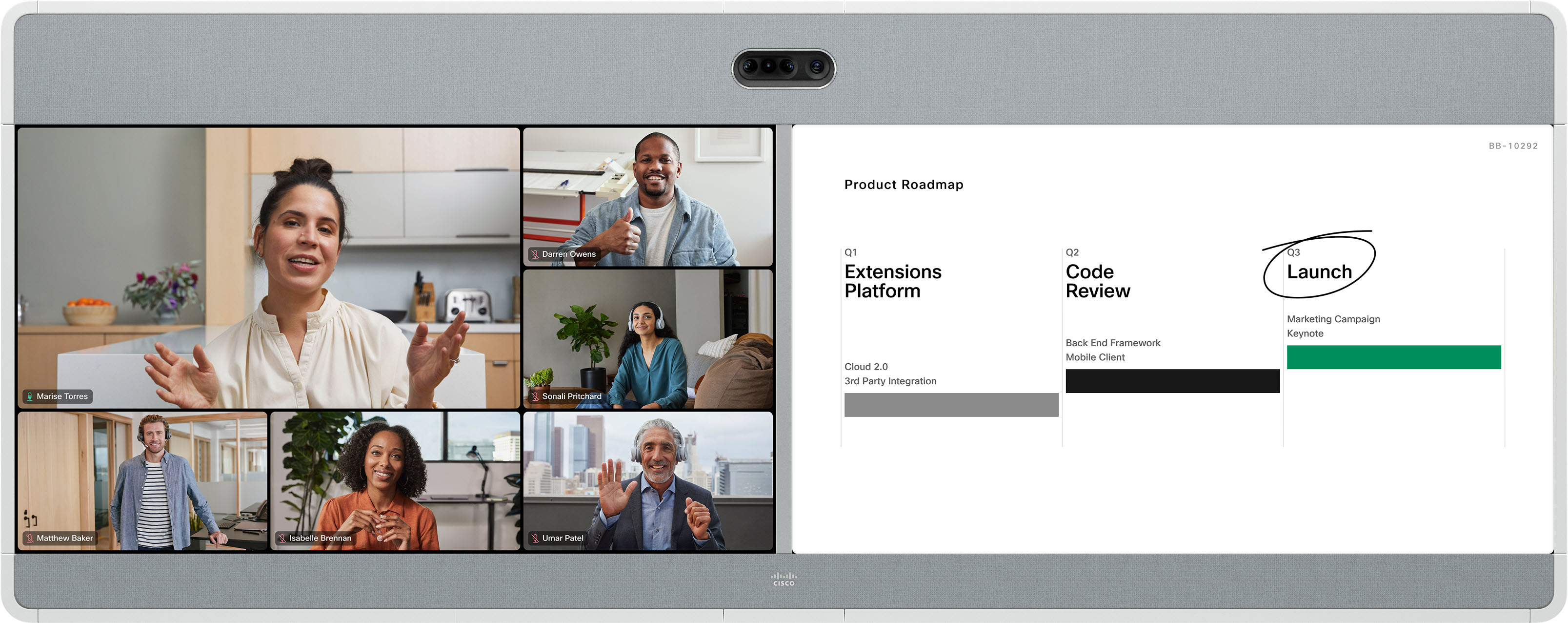
Generic third-party SIP and H.323 video conferencing systems calling in to a Webex meeting can take advantage of the same video stream layouts shared by Board, Desk, and Room Series devices. You can toggle layouts with DTMF 2 and 8.
See the Single screen tab for information about how each layout will appear on a third-party device.
When sharing content, third-party systems using two screens will display content on the second screen. Participant video will appear on the main screen, as in a single screen setup.
If no content is being shared, participant video will appear on the main screen and the second screen will be blank.


